
The goal of daughter-dependency theory is the same as that of Chomskyan transformational grammar—to generate syntactic structures for all (and only) syntactically well-formed sentences that would relate to both the phonological and the semantic structures of the sentences. However, unlike transformational grammars, those based on daughter-dependency theory generate a single syntactic structure for each sentence. This structure incorporates all the kinds of information that are spread, in a transformational grammar, over to a series of structures (deep, surface, and intermediate). Instead of the combination of phrase-structure rules and transformations found in transformational grammars, daughter-dependency grammars contain rules with the following functions: classification, dependency-marking, or ordering.
Hudson's strong arguments for a non-transformational grammar stress the capacity of daughter-dependency theory to reflect the facts of language structure and to capture generalizations that transformational models miss. An important attraction of Hudson's theory is that the syntax is more concrete, with no abstract underlying elements.
In the appendixes, the author outlines a partial grammar for English and a small lexicon and distinguishes his theory from standard dependency theory. Hudson's provocative thesis is supported by his thorough knowledge of transformational grammar.
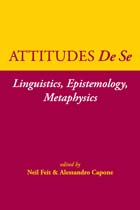
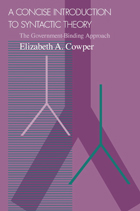
"Cowper exhibits the analytical devices of current principles-and-parameters approaches, takes readers carefully through the central elements of grammatical theory (including very recent work), and ushers them selectively into the technical literature. . . . A serious introduction for those who want to know the nuts and bolts of syntactic theory and to see why linguists are so excited these days."—David Lightfoot, University of Maryland
"An excellent short introduction to the Government and Binding model of syntactic theory. . . . Cowper's work succeeds in teaching syntactic argumentation and in showing the conceptual reasons behind specific proposals in modern syntactic theory."—Jaklin Kornfilt, Syracuse University
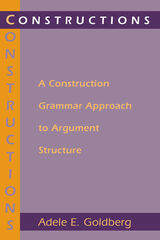
Goldberg provides a comprehensive account of the relation between verbs and constructions, offering ways to relate verb and constructional meaning, and to capture relations among constructions and generalizations over constructions. Prototypes, frame semantics, and metaphor are shown to play crucial roles. In addition, Goldberg presents specific analyses of several constructions, including the ditransitive and the resultative constructions, revealing systematic semantic generalizations.
Through a comparison with other current approaches to argument structure phenomena, this book narrows the gap between generative and cognitive theories of language.
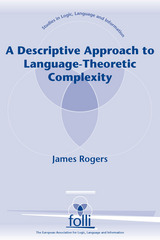
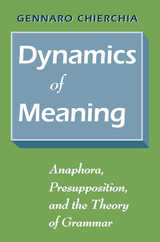
Chapter 1 introduces the notion of dynamic semantics and discusses in detail the phenomena that have been used to motivate it, such as "donkey" sentences and adverbs of quantification. The second chapter explores in greater depth the interpretation of indefinites and issues related to presuppositions of uniqueness and the "E-type strategy." In Chapter 3, Chierchia extends the dynamic approach to the domain of syntactic theory, considering a range of empirical problems that includes backwards anaphora, reconstruction effects, and weak crossover. The final chapter develops the formal system of dynamic semantics to deal with central issues of definites and presupposition. Chierchia shows that an approach based on a principled enrichment of the mechanisms dealing with meaning is to be preferred on empirical grounds over approaches that depend on an enrichment of the syntactic apparatus.
Dynamics of Meaning illustrates how seemingly abstract stances on the nature of meaning can have significant and far-reaching linguistic consequences, leading to the detection of new facts and influencing our understanding of the syntax/semantics/pragmatics interface.
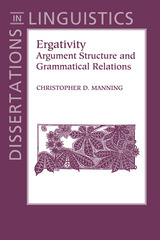

Generalized Phrase Structure Grammar provides the definitive exposition of the theory of grammar originally proposed by Gerald Gazdar and developed during half a dozen years' work with his colleagues Ewan Klein, Geoffrey Pullum, and Ivan Sag. This long-awaited book contains both detailed specifications of the theory and extensive illustrations of its power to describe large parts of English grammar. Experts who wish to evaluate the theory and students learning GPSP for the first time will find this book an invaluable guide.
The initial chapters lay out the theoretical machinery of GPSP in a readily intelligible way. Combining informal discussion with precise formalization, the authors describe all major aspects of their grammatical system, including a complete theory of syntactic features, phrase structure rules, meta rules, and feature instantiation principles. The book then shows just what a GPSP analysis of English syntax can accomplish. Topics include the internal structure of phrases, unbounded dependency constructions of many varieties, and coordinate conjunction—a construction long considered the sticking point for phrase structure approaches to syntax.
The book concludes with a well developed proposal for a model theoretic semantic system to go along with GPSP syntax. Throughout, the authors maintain the highest standards of explicitness and rigor in developing and assessing their grammatical system. Their aim is to provide the best possible test of the hypothesis that syntactic description can be accomplished in a single-level system. And more generally, it is their intention to formulate a grammatical framework in which linguistic universals follow directly from the form of the system and therefore require no explicit statement. Their book sets new methodological standards for work in generative grammar while presenting a grammatical system of extraordinary scope.

Kuno and Takami begin by looking at extraction phenomena, including extraction from complement clauses, the overt subject requirement, and subjacency, and provide functional accounts that improve on the Barriers analysis. Next, they discuss multiple wh questions in English and Japanese, with special reference to why and naze. The authors also examine and ultimately reject the major arguments in support of Larson's "light predicate raising" analysis. Finally, Kuno and Takami discuss coreferentiality of picture noun reflexives and the relation of quantifier scope interpretations, particularly those in sentences involving psychological verbs such as bother, worry, and please.
In this subtly argued book, the authors raise questions of critical importance for theoretical linguists of all persuasions.
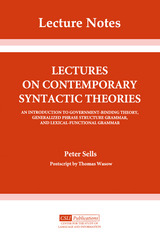
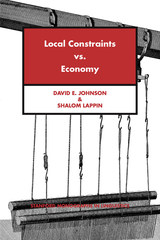
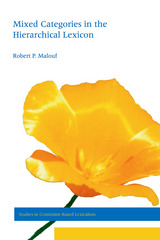
This book presents a novel analysis of this and similar mixed category constructions in languages including Quechua, Tibetan, Arabic, Fijian, Dagaare, and Jacaltec. Under this analysis, Robert P. Malouf shows that verbal gerunds share the selectional properties of verbs and the distributional properties of nouns. He further shows that since different dimensions of grammatical information can vary independently, the behavior of mixed categories creates no paradox. These dimensions are in principle independent. However, certain types of mixed categories are quite common in the world's languages, while others are rare or nonexistent. The book discusses how cross-linguistic variation can be accounted for by a lexical categorial prototype. By stating these prototypes as default constraints in a hierarchy of lexical information, Malouf argues that one can bring insights from cognitive and functional approaches to linguistics into a formal analysis, thus building on the strengths of both approaches.


Surface Structure provides a complete and up-to-date exposition of a major variant of the Chomskian theory of language: the so-called Revised Extended Standard Theory. Robert Fiengo presents the theory in a clear and succinct way and shows how many of the leading ideas in the theory can be deepened and strengthened. It is Fiengo's central thesis that there is a syntactic level—surface structure—which constitutes the interface between syntactic, lexical, morphological and semantic components of the grammar. This thesis is defended across a broad range of problems in English grammar, resulting in a significant increase in the empirical coverage of the theory.
Although not a polemical work, Fiengo's book addresses many of the current controversies in linguistics and presents a rationale for guiding choices among competing theories. At a time when linguistic theories appear to be diverging in an explosive fashion, this lucid and current discussion is precisely what is needed.
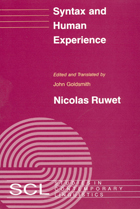
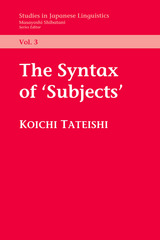
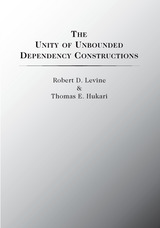
READERS
Browse our collection.
PUBLISHERS
See BiblioVault's publisher services.
STUDENT SERVICES
Files for college accessibility offices.
UChicago Accessibility Resources
home | accessibility | search | about | contact us
BiblioVault ® 2001 - 2024
The University of Chicago Press









